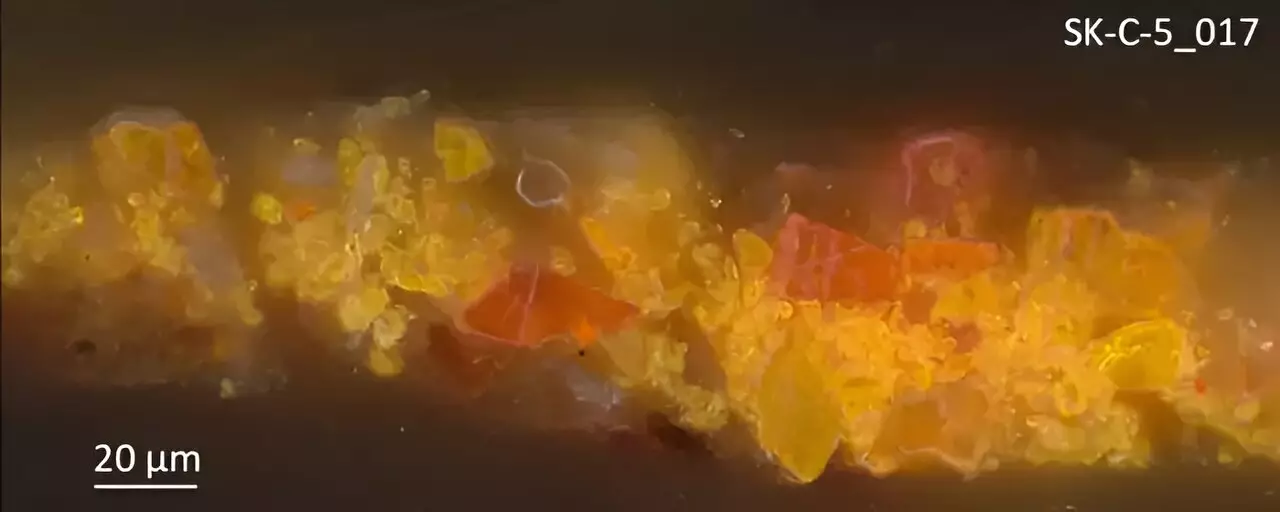In a groundbreaking discovery, chemists at the Rijksmuseum and the University of Amsterdam (UvA) have shed light on the intricate process that Rembrandt employed to create his famous “golden” paint. By utilizing advanced spectroscopic techniques, researchers were able to identify the presence of special arsenic sulfide pigments – pararealgar and semi-amorphous pararealgar – in a particular detail of Rembrandt’s masterpiece, “The Night Watch.”
The study, conducted by Ph.D. candidates Fréderique Broers and Nouchka de Keyser, revealed that Rembrandt intentionally combined these arsenic sulfide pigments with other pigments to achieve the desired golden luster in his artwork. Specifically, the golden threading in the clothing of Lieutenant Willem van Ruytenburch was intricately depicted using this rather unusual combination of pigments.
One of the most surprising findings of the research was the presence of pararealgar and semi-amorphous pararealgar in the paint samples taken from the painting. This discovery challenged previous assumptions that orpiment and realgar were the arsenic sulfide pigments used by Rembrandt. Through a meticulous analysis combining various scientific methods, researchers were able to confirm the presence of these unique pigments in the artwork.
The use of pararealgar and semi-amorphous pararealgar in Rembrandt’s painting was not merely a result of paint degradation over time, as is often the case with historical artworks. Instead, the researchers argue that Rembrandt deliberately selected these pigments to accurately capture the golden details of Van Ruytenburch’s clothing. By heating yellow pararealgar to form the reddish semi-amorphous pararealgar and combining it with lead-tin yellow and vermilion pigments, Rembrandt was able to achieve the unique golden hue in his painting.
The discovery of these arsenic sulfide pigments in Rembrandt’s work suggests a broader range of available materials in 17th-century Amsterdam than previously believed. Historical sources also support the use of similar pigment combinations by other artists of the time, such as Willem Kalf. This indicates that Rembrandt’s choice of pigments was a deliberate artistic decision, rather than a limitation of available materials.
The meticulous analysis of Rembrandt’s “The Night Watch” has provided new insights into the artist’s technique and materials. By uncovering the presence of pararealgar and semi-amorphous pararealgar in the paint layers, researchers have highlighted the complexity and sophistication of Rembrandt’s artistic process. This study not only enriches our understanding of Rembrandt’s work but also sheds light on the innovative use of pigments in 17th-century Dutch art.


Leave a Reply